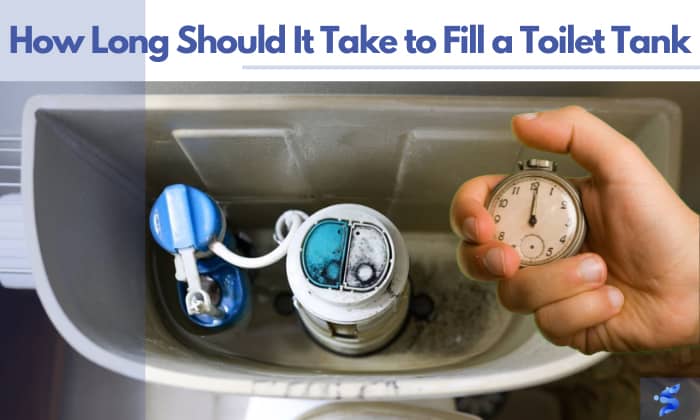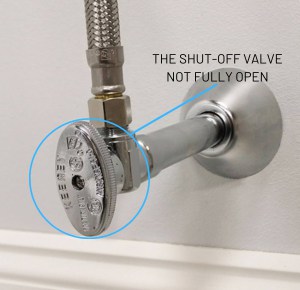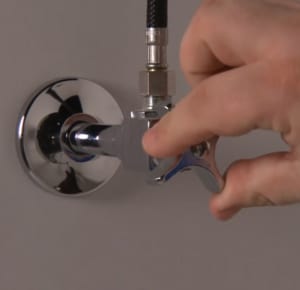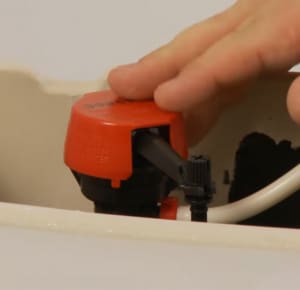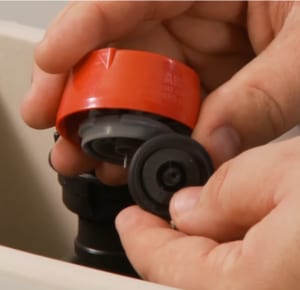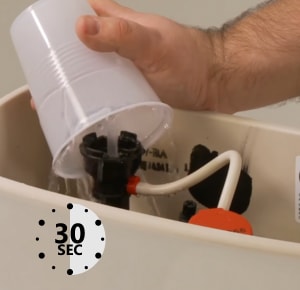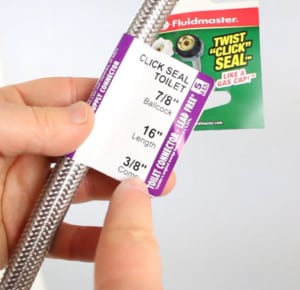Have you ever wondered how long should it take to fill a toilet tank after flushing? Don’t worry; you’re not alone. After all, it has to fill up fast for the next user or when the first wave of water isn’t enough to flush the waste.
Depending on the toilet, the tank may take as little as 30 seconds to fill up, but it should not exceed 3 minutes. If the latter happens, we included simple solutions in this article.
Table of Contents
Filling Duration and Factors Affecting the Toilet Tank’s Filling Time
In 1992, commodes were required to have 1.6 gallons per flush (GPF) for efficiency and to conserve water. Later on, toilets with 1.28 GPF were also developed for the same purpose. But despite requiring less water, the flush is still strong.
The tanks of 1.6 and 1.28 GPF commodes may take as little as 30 seconds or 1 minute to refill, although it’s normal for them to take up to 3 minutes as well. Read below to see what affects the filling time of toilet tanks.
1. Water supply
One factor that affects how fast should a toilet tank fill is the water supply. When we flush, the water is released into the bowl in 3 seconds, then the tank immediately refills. The amount of water that enters the tank after flushing determines the speed of the filling time.
If you notice that the tank takes too long to fill up, then the water supply may be at low pressure. The cause can be the shut-off valve not being fully open or your home’s water pressure, in general, is low.
2. Water supply line’s diameter
Also known as the water supply hose, this connects the toilet tank to the water valve outlet on the wall. While there is no standard size for this component, it must meet the characteristics of your commode.
Supply lines usually range from ½’’ to ¾’’ in diameter. If you have a big commode, you will need more water and quickly too. So, if you have a toilet tank filling slowly, consider checking the supply hose’s diameter.
3. Fill valve’s performance
The optimal time for a toilet tank to fill is 3 minutes or less, and a healthy fill valve makes this possible. This component lets the water go inside the tank from the supply line when the float detects a lower water level than desired.
That said, if you see the toilet taking a long time to fill, the fill valve may be dirty. Here’s a simple way to clean it:
1. Turn off the shut-off valve and flush the toilet.
2. Remove the fill valve’s cap assembly by pressing on the cap and rotating it counterclockwise by a quarter.
3. Remove the seal from inside the cap and rinse it. Also, check the seal for damages to determine if you need a new cap assembly.
4. Go back to the fill valve and take a plastic cup—or a similar item. Use it to cover the top of the valve.
5. Turn on the shut-off valve to flush the debris out of the fill valve for 30 seconds.
6. After 30 seconds, turn off the shut-off valve. Take the seal and install it back into the cap.
7. Press the cap assembly on the top and rotate it clockwise by a quarter. You can now turn on the shut-off valve and observe the toilet tank’s filling time.
If cleaning the fill valve doesn’t do the trick, it’s probably worn out due to age, especially when the component has already been in use for 7 or more years. In this case, you must replace the component, which you can do by yourself.
4. Tank’s water level tuning
Connected to the fill valve is the float that is responsible for the tank’s water level. This can be a ball, cup, internal float, or the valve can even be floatless. Wherever the float is positioned, the water level of the tank follows, which should only be 1 or 2 inches below the overflow tube.
If it’s placed too low, then the tank won’t fill the necessary amount of water at all. If it’s too high, you may notice the toilet running longer than usual and the water overflowing at the back of the tank, and it keeps on refilling even though it’s full.
Since there are different types of floats, they are also adjusted differently:
- Plunger or piston-type and bass diaphragm ballcock – adjusted by bending the rod upward or downward.
- Plastic diaphragm ballcock – adjustable by turning the screw at the top of the valve clockwise or counterclockwise.
- Float cup – tuned by loosening the cup and manually moving it higher or lower.
- Internal float – tuned by unlocking the fill valve head and changing its height.
- Floatless fill valve – adjusted by turning the screw in the fill valve clockwise or counterclockwise.
How to Fix a Slow Filling Toilet Tank
We have determined what affects the tank’s filling time and how the maximum duration should only be 3 minutes. If it exceeds that, then it’s best to perform a check-up by yourself to see the problem.
1. Water supply
- Fully turn the water shut-off valve to allow maximum water pressure into the tank.
- If the home’s water pressure is low, contact your water supplier first and raise the concern.
- If the water supplier is not the issue, have a licensed plumber check the problem to come up with a solution, such as adjusting the pressure regulator or unclogging or replacing water pipes.
2. Water supply line or hose
- Optimize the water pressure by choosing the adequate size of the water supply line. The bigger the toilet, the more water is necessary, which calls for a larger supply hose diameter.
3. Fill valve and float
- Ensure that the valve is clean and the parts are intact. We have provided easy-to-follow instructions in the previous section to flush debris out of the said component.
- The correct positioning of the fill valve is also important (the left side inside the tank) to ensure the correct functioning.
- In case of damage, replace the broken part or the entire valve if necessary.
- Ensure that the float’s height is optimal for the required water level in the tank (1 or 2 inches below the overflow tube).
- See if the flapper seal is intact and the right fit for the flush tube. Replace the seal if not.
Conclusion
To answer how long should it take to fill a toilet tank, it will depend on the toilet. The water pressure, for example, determines how much liquid can get into the tank during a certain period. Having a supply hose with the correct diameter is also essential.
Finally, the fill valve should be clean and intact to successfully bring water in, and the float must be at the correct height.

I’m Paulk Webb, and I work as a writer for Saveourwaterrebates. I’m happy to put in the time and effort to conduct market research to identify the most pressing issues faced by households concerning their plumbing. Feel free to check out our guides to get the most informed recommendations for how to solve your problems.


